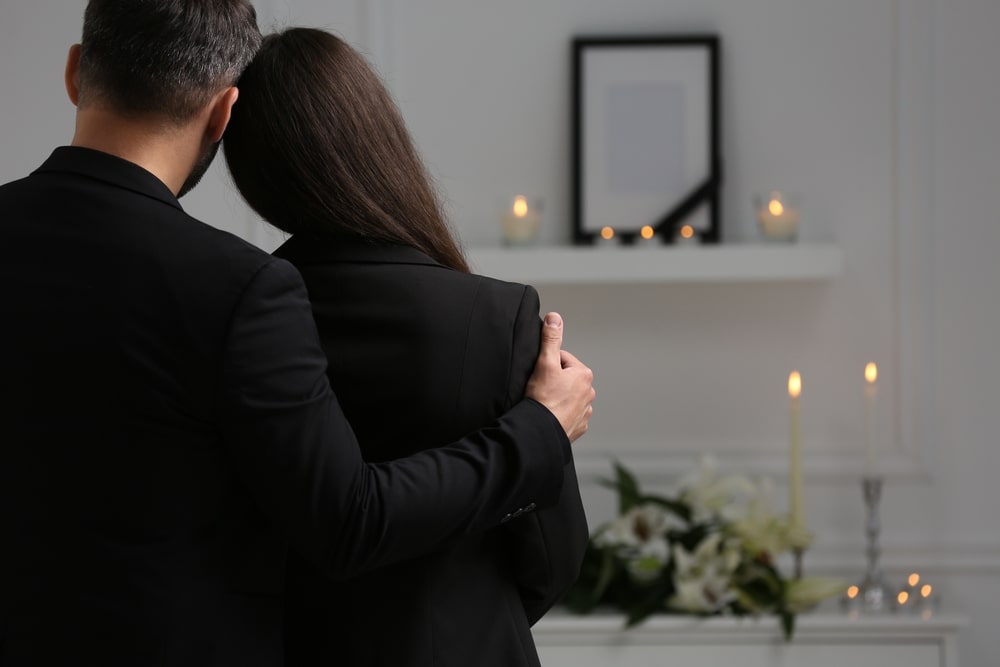By Alan D. Wolfelt, Ph.D.
Paradox 2: Mourners must make friends with the darkness before they can enter the light.

A paradox is a seemingly self-contradictory statement or situation that is in fact often true. The paradox of mourning we will consider together in this article might, at first glance, seem self-contradictory, but as I will reveal, it is actually a forgotten Truth with a capital T. It’s a Truth we must rediscover because it is essential to understanding how mourners heal in the aftermath of significant loss.
The International Dark-Sky Association is a nonprofit “fighting to preserve the night.” Recognizing that human-produced light creates “light pollution,” which diminishes our view of the stars, disrupts our circadian rhythms and ecosystems, and wastes significant amounts of energy, the association seeks to reserve the use of artificial lighting at night to only what is truly necessary. As you read about Paradox 2, I would like you to remember this mantra of “fighting to preserve the night.” During our times of grief, we are also well served to fight to honor and preserve the sanctity and restorative powers of the dark night of the soul.
The Dark Night of the Soul

One way in which we used to honor the need to make friends with the darkness of grief was to observe a period of mourning whose length and customs varied by era, religion and culture, as well as by a mourner’s specific relationship to the deceased. During this time, mourners essentially withdrew from society. When they did venture out, they wore clothing that outwardly represented their internal reality.
Such mourning “rules” or customs were a way of acknowledging loss and honoring the need for a period of darkness. They were superficial signs of a deeply profound, spiritual crisis. In fact, a significant loss plunges you into what C.S. Lewis, Eckhart Tolle and various Christian mystics have called “the dark night of the soul.”
After the death of someone loved, the dark night of the soul can be a long and very black night indeed. Families struggling after a significant loss of any kind are inhabiting that long, dark night. It is uncomfortable and scary. It hurts. Yet if they allow themselves to sit still in the blackness without trying to fight it, deny it or run away from it, they will find that it has something to teach them.
The So-called Dark Emotions

Have you noticed that we tend to equate the dark with all things evil and bad, while light represents goodness and purity? Darkness is night, ghosts, caves, bats, devils and vampires. Darkness is also ignorance and void. And when we feel “dark” emotions, we mean that we feel sadness, emptiness, loss, depression, despair, shame and/or fear. Yes, the dark emotions are painful and challenging to experience. But are they really bad? No, they are not.
Feelings are not intrinsically good or bad – they simply are. They arise in us in response to what we are seeing, hearing, touching, tasting and smelling in any given moment. They also emanate more abstractly from our thoughts. Feelings are essentially the bodily response to the existential experience of living and being.
And so it is normal and natural for mourners to turn to the dark emotions of grief. They must acknowledge them and allow themselves to feel them. In fact, I often say that we must befriend our dark emotions. Befriending pain is hard. It’s true that it is easier to avoid, repress or deny the pain of grief than it is to embrace it, yet it is in befriending our pain that we learn from it and unlock our capacity to be transformed by it.
Funeral directors can and do help by bearing witness to and normalizing expressions of this pain. When you create a safe, unhurried atmosphere for families to encounter the dark emotions in your presence, you are letting them know that their behavior – crying, keening, expressing anger or anguish, etc. – is normal and necessary.
The Darkness of Liminal Space

Grief lives in liminal space. Limina is the Latin word for threshold, the space betwixt and between. In funeral service, you help people who are in liminal space every day. They are unsettled. They are in limbo. Both their automatic daily routines and their core beliefs have been shaken, forcing them to reconsider who they are, why they’re here and what life means.
Yes, it’s uncomfortable being in liminal space, but that’s where grief takes mourners. Without grief, they wouldn’t go there. But it is only in liminal space that they can reconstruct their shattered worldviews and re-emerge as transformed people who are ready to live and love fully again.
The Light of Empathy in the Darkness

Funeral directors can help families cope during the dark night of the soul by employing empathy. But first, it’s important to understand the difference between sympathy and empathy. When people are sympathetic to you, they are noticing and feeling concern for your circumstances, usually at a distance. They are “feeling sorry” for you. They are feeling “pity” for you. They may be offering a simple solution, platitude or distraction. Sympathy is “feeling for” someone else.
Empathy, on the other hand, is about making an emotional connection. It is a more active process, one in which the listener tries to understand and feel your experience from the inside out. The listener is not judging you or your thoughts and feelings. She is not offering simple solutions. Instead, she is making herself vulnerable to your thoughts, feelings and circumstances by looking for connections to similar thoughts, feelings and circumstances inside her. She is being present and allowing herself to be taught by you. Empathy is “feeling with” someone else. In the time of darkness of the families you serve, your genuine empathy can be the candle they need to find their way through the early days of their grief.
Entering the Light

Paradox 2 says that mourners must make friends with the darkness before they can enter the light. But what is the light? There really is no set destination on the journey through grief. The light of healing in grief is not exactly like the light at the end of a tunnel. Reconciliation is the goal, but it is not a fixed end point or perfect state of bliss. At least here on earth, bittersweet is as sweet as it gets.
The Chinese yin-yang symbol represents the duality of many experiences in life. The shape of the symbol is a perfect circle – in other words, a unified whole. But making up the circle are two comma shapes – one black (the yin) and one white (the yang). And within each comma shape is a dot of the opposite color.
The symbol is a visual reminder that everything comprises both darkness and light. Yet the darkness and the light are not opposing forces. Rather, they are complementary twins that only together form a whole. What’s more, the drop of white in the black yin and the drop of black in the white yang remind us that nothing is purely dark or light, good or bad. Instead, life is made up of people, places, actions, things and experiences that are mixtures of both.
And so, as you help families create meaningful funeral experiences, think of the light as the thoughts and feelings you want to project as possibilities for their futures. While the time of the funeral is a natural and necessary time of darkness, you may have opportunities to reassure them that there is love and life in the months to come. A meaningful, elements-rich funeral also upholds hope, gratitude, joy, love and peace.
To read Part 1 of this article, visit this page: The Paradoxes of Mourning Part 1 of 3: Creating Hello Opportunities
To read Part 3 of this article, visit this page: The Paradoxes of Mourning Part 3 of 3: Backtracking on the Road to Healing
About the Author:
 Dr. Alan Wolfelt is a noted author, educator, grief counselor. Dr. Wolfelt believes that meaningful funeral experiences help families and friends support one another, embrace their feelings, and embark on the journey to healing and transcendence. Recipient of the Association of Death Education and Counseling’s Death Educator Award, Dr. Wolfelt presents workshops across the world to grieving families, funeral home staffs, and other caregivers. He also teaches training courses for bereavement caregivers at the Center for Loss and Life Transition in Fort Collins, Colorado, where he serves as Director. Dr. Wolfelt is on the faculty of the University of Colorado Medical School’s Department of Family Medicine. He is also the author of many bestselling books, including Understanding Your Grief, The Mourner’s Book of Hope, Creating Meaningful Funeral Ceremonies, and The Paradoxes of Grief: Healing Your Grief With Three Forgotten Truths, upon which this series is based. For more information, visit www.centerforloss.com
Dr. Alan Wolfelt is a noted author, educator, grief counselor. Dr. Wolfelt believes that meaningful funeral experiences help families and friends support one another, embrace their feelings, and embark on the journey to healing and transcendence. Recipient of the Association of Death Education and Counseling’s Death Educator Award, Dr. Wolfelt presents workshops across the world to grieving families, funeral home staffs, and other caregivers. He also teaches training courses for bereavement caregivers at the Center for Loss and Life Transition in Fort Collins, Colorado, where he serves as Director. Dr. Wolfelt is on the faculty of the University of Colorado Medical School’s Department of Family Medicine. He is also the author of many bestselling books, including Understanding Your Grief, The Mourner’s Book of Hope, Creating Meaningful Funeral Ceremonies, and The Paradoxes of Grief: Healing Your Grief With Three Forgotten Truths, upon which this series is based. For more information, visit www.centerforloss.com
Printed by permission of Dr. Alan D. Wolfelt, all rights reserved.




